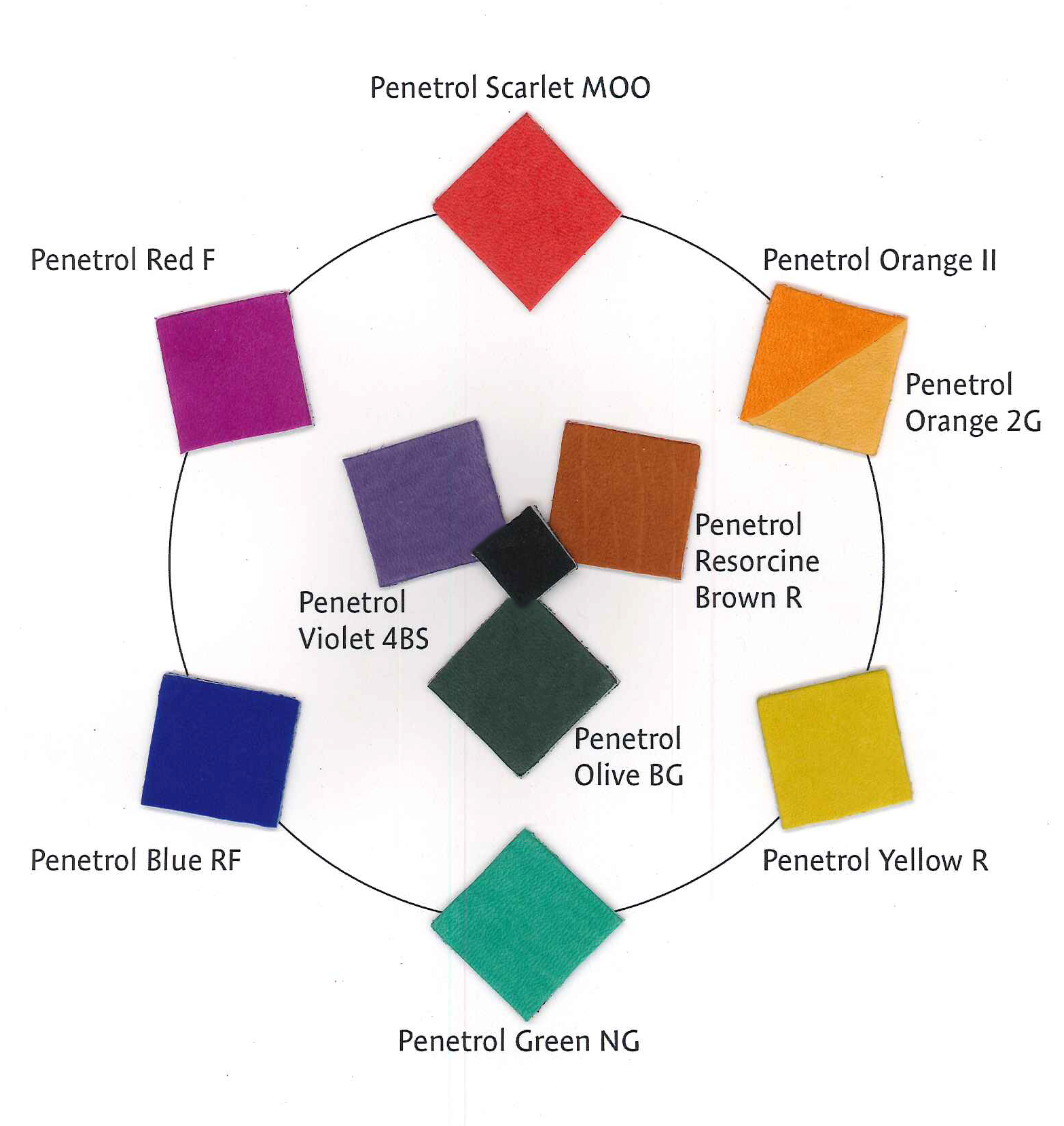How to Mix Color Using Subtractive Color Blending
Color creation for leather comes as a result of the subtractive color blending process. This method focuses on the primary colors and how they combine to create a more diverse palette. For example, using yellow and blue to create a range of green shades.
Miss our first post on creating color for leather? Check it out here.
New colors develop from the three primary colors of red, blue, and yellow. When you mix the primary colors in equal amounts, you create secondary colors like orange, violet, and green. Combining a primary and secondary colors creates a tertiary color. The rest of the colors are variations of ten basic colors as adapted from the following color chart.
When all the colors mix in equal amounts, no wavelengths emit, so we see black as a result.

The color wheel serves as a tool to visually show the relationship between the primary colors and the other hues produced by mixing them. The position of a mixed color on the wheel indicates both its parentage and intensity. The range of shades available by mixing any set of colors is also represented in the layout of the color wheel.
Reviewing the Color Wheel Categories
Primary Colors
It is impossible to mix colors to create a primary color. Yet, when mixed with other primaries it produces almost all the other colors.

Secondary Colors
We create secondary colors by mixing equal amounts of two primary colors. Most are quite familiar with these colors: Red and Blue make violet, Red and Yellow make orange, and Blue and Yellow make green.

Tertiary Colors
Describes a color composed of each of the three primaries. The colors designated as the major tertiaries consist of two combined secondary colors. The major tertiaries for leather are: Olive (orange and green), Rust (orange and violet), and Navy blue (green and violet).
Tertiary colors are less intense since they contain each of the three primary colors in their mix. Combining more than two colors leaves a graying effect caused by the subtractive mixture. This is often why when looking at low-cost dye mixes, you’ll see multiple colors when the dye is tested on a spray-out on paper. The more blended the dye, the more color work that needs to go into formulating it to be the desired shade.
Download a copy of our color wheel for your lab and design teams.
Using the Color Wheel to Mix and Adjust Hues
By taking advantage of the dyes available today it is possible to mix practically any color. The color chart makes it more clear how dye mixes can enhanced with a visual guide to color mixing science. We take an approach that utilizes this color science with our technicians’ trained eyes.
The first step when planning a color mix is to figure out the color’s three dimensions: hue, intensity, and value. Then by matching the desired color to a similar color on the wheel, we can determine which colors to mix and how much of each parental shade to use. We know this since the position of a color on the wheel indicates the theoretical amounts of each color used to produce it.
Using a specific industry color wheel can give insight into how to best create a dye mix. Here we show a general leather dye mix color chart. For a specific chromatic wheel for industries like upholstery, shoe, or garment, please contact us.
Click here to request a leather subtractive color chart for your application.



